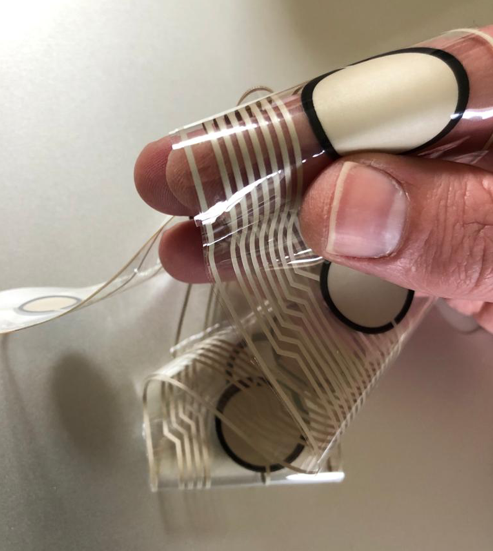SocketSense project is utilising LAE printable electronics and the very latest developments in Quantum Materials (Quantum Technology Supersensors™) to create durable, flexible, lightweight and low-cost multi-functional sensors for monitoring both pressure and friction in prosthetic sockets. QTSS™ inks are printable onto and can transform a variety of substrates into smart sensing surfaces including TPU, PET and Flex-pcb and the most suitable flexible substrate for this particular socket-sensing application is being selected. QTSS and RISE IVF are working on the production and testing of the sensors to line the socket walls in key identified regions of interest and KTH are developing the data capture electronics for the embedded sensing system.
Emerging technologies like Quantum Materials & printable electronics provide new approaches to resolving healthcare needs. For a long time there has been an unmet need for extremely thin, flexible and wearable sensors to measure pressure, friction and shear in prosthetic sockets and to reduce the cost and enhance performance over currently available pressure sensors. Quantum Technology Supersensor™ materials which harness ‘quantum effects’ at a sub-atomic level make it possible to have products which:
- Have new form factors, are ultra-thin, lightweight, flexible & customizable
- Have low voltage operation & low power consumption
- Are simple to manufacture in large scale
- Reduce the environmental impact
- Achieve new low-cost structures and multi-functionality
The conduction mechanism of traditional polymeric composites is percolation, whereas QTSS™ materials harness quantum conduction mechanisms to exhibit a massive resistance change under pressure over many orders of magnitude… all the way from insulator to metallic like conductor. Additionally they only electrically conduct through the material at the point of pressure and not throughout the material and can also be used to sense friction and shear.
This makes them particularly suitable for ‘dynamic sensing’ applications like prosthetic socket sensing where a large resistance range is required to monitor what is happening with pressures and where friction and shear are also important issues. By utilising a QTSS sensor array as an internal socket ‘skin’ SocketSense aims to record large data-sets within a socket to reveal information from the different regions of a patient’s stump dynamically and at rest to assist in the future with patient comfort and fit.

